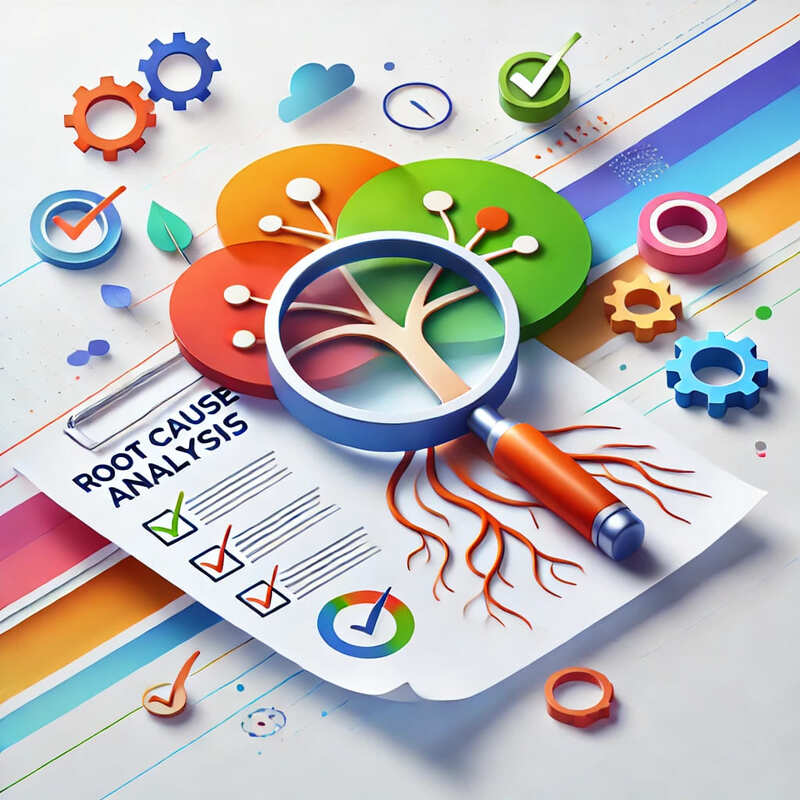Objective
To familiarize staff members with Root Cause Analysis (RCA) techniques, specifically focusing on the “5 Whys” and the “Fishbone Diagram.” Understanding the root cause of a problem is crucial for implementing long-term solutions.
Topics Covered:
- Introduction to Root Cause Analysis
- The 5 Whys Method
Introduction to Root Cause Analysis
- What is Root Cause Analysis?: Root Cause Analysis is a problem-solving method aimed at identifying the core issue that is causing one or multiple symptoms.
- Why is RCA Important?: RCA helps to ensure that problems are fully understood, managed, and less likely to recur in the future.
- When to Use RCA?: RCA is most effective when used for complex problems where the initial symptom is a sign of a deeper issue.
The 5 Whys Method
- Understanding the 5 Whys: A technique that involves asking “Why?” five times in succession to drill down into the layers of a problem.
- How to Use the 5 Whys: Start with the problem statement and ask “Why?” until you reach the root cause. Each answer forms the basis of the next question.
- Application in Problem-Solving: This method is particularly useful for quickly getting to the root of a problem in a straightforward and easy-to-understand way.
- Example:
- Problem: A client’s campaign is not performing well.
- Why?: The click-through rate is low.
- Why?: The ad copy is not compelling.
- Why?: It was written hastily.
- Why?: Deadlines were tight.
- Why?: Poor project planning.
- Root Cause: Poor project planning.
Summary
Root Cause Analysis is an essential skill for any problem solver. The 5 Whys and Fishbone Diagram are practical tools that can be used individually or in combination to identify the root cause of a problem effectively.



